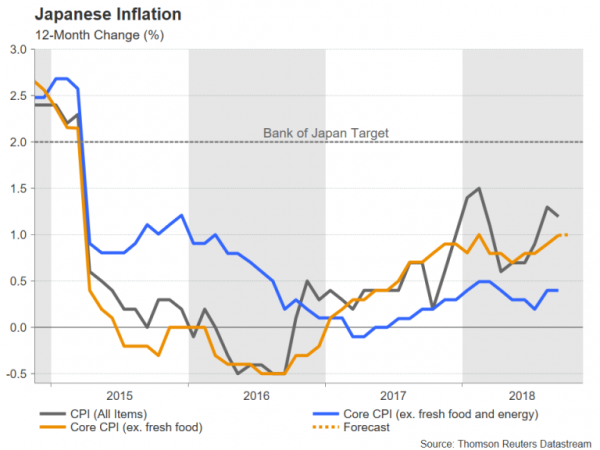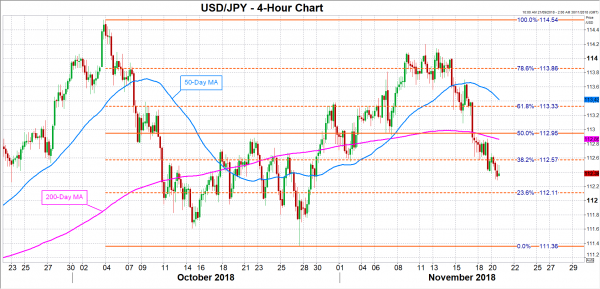Inflation numbers are due out of Japan on Thursday (Wednesday, 23:30 GMT), with the core CPI rate anticipated to have held steady in October. But as the annual rate of inflation creeps up towards the Bank of Japan’s 2% target at a snail’s pace, the central bank is growing increasingly uneasy about the impact of its negative interest rate policy on the country’s financial system.
There’s likely to be little encouraging news on the inflation front for policymakers on Thursday as the consumer price index excluding fresh food prices is expected to remain unchanged at 1.0% year-on-year for October. While this particular measure of core inflation is what the BoJ officially targets, the Bank also keeps a close watch on the so-called ‘core-core’ rate, which excludes energy prices in addition to fresh foods. The ‘core-core’ rate stood at just 0.4% y/y in September, highlighting the non-existence of underlying prices pressures in the Japanese economy after years of ultra-loose monetary policy.
The Bank of Japan insists that it has no plans to exit from its unconventional massive stimulus program until inflation has reached its 2% goal. However, the Governor, Haruhiko Kuroda, and other BoJ board members have recently become more vocal about the possible negative impacts on the banking system from a protracted period of easy monetary policy and negative interest rates. Speaking in Tokyo on Monday, Kuroda warned that declining profits by banks could lead to risk taking, which would endanger the entire financial system. He cited prolonged low interest rates and a falling population as factors that are hurting regional banks’ core profitability.
The remarks suggest the BoJ may not necessarily wait for inflation to rise to 2% before lifting its benchmark rate out of negative territory if it sees its policies destabilising the banking system. The BoJ already moved to make its policies more sustainable back in July by widening the band that long-term yields can fluctuate around its target of 0%.
The yen firmed slightly after Kuroda’s comments but a bigger driver for the yen this past week has been safe-haven flows related to Brexit, Italian budget woes, trade tensions and a weakening dollar on the back of emerging expectations that the Fed may slow down its pace of rate increases. Any reaction therefore on Thursday to the CPI data will likely be fairly muted.
A positive surprise in the inflation numbers could drag dollar/yen further down, with immediate support likely to come from the 23.6% Fibonacci retracement level of the downleg from 114.54 to 111.36, around 112.10. A dip below this level would deepen the current bearish bias for the pair and turn the focus on the October 6-week low of 111.36.
However, a shift in risk sentiment and another lacklustre CPI print could help dollar/yen move away from 3-week lows. The nearest hurdle on the upside is the 38.2% Fibonacci level at 112.57. Clearing this resistance could open the way for the 50% Fibonacci at 112.95. But the bearish pressure is unlikely to disappear unless the pair manages to break above the 61.8% Fibonacci at 113.33.
















